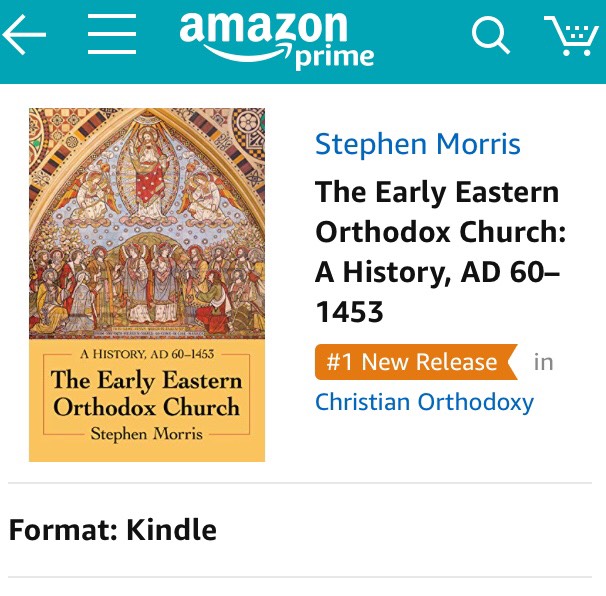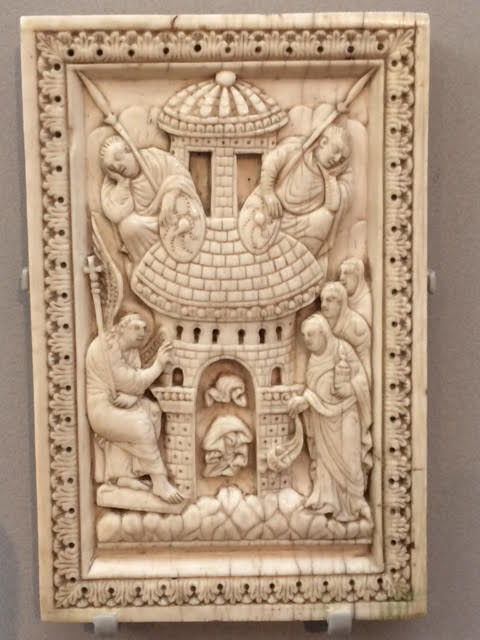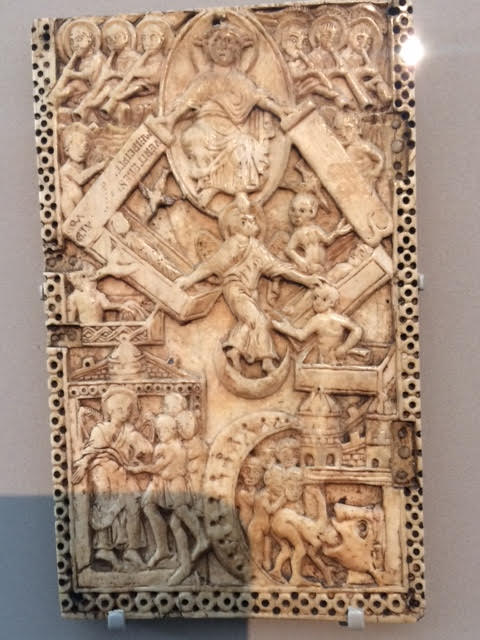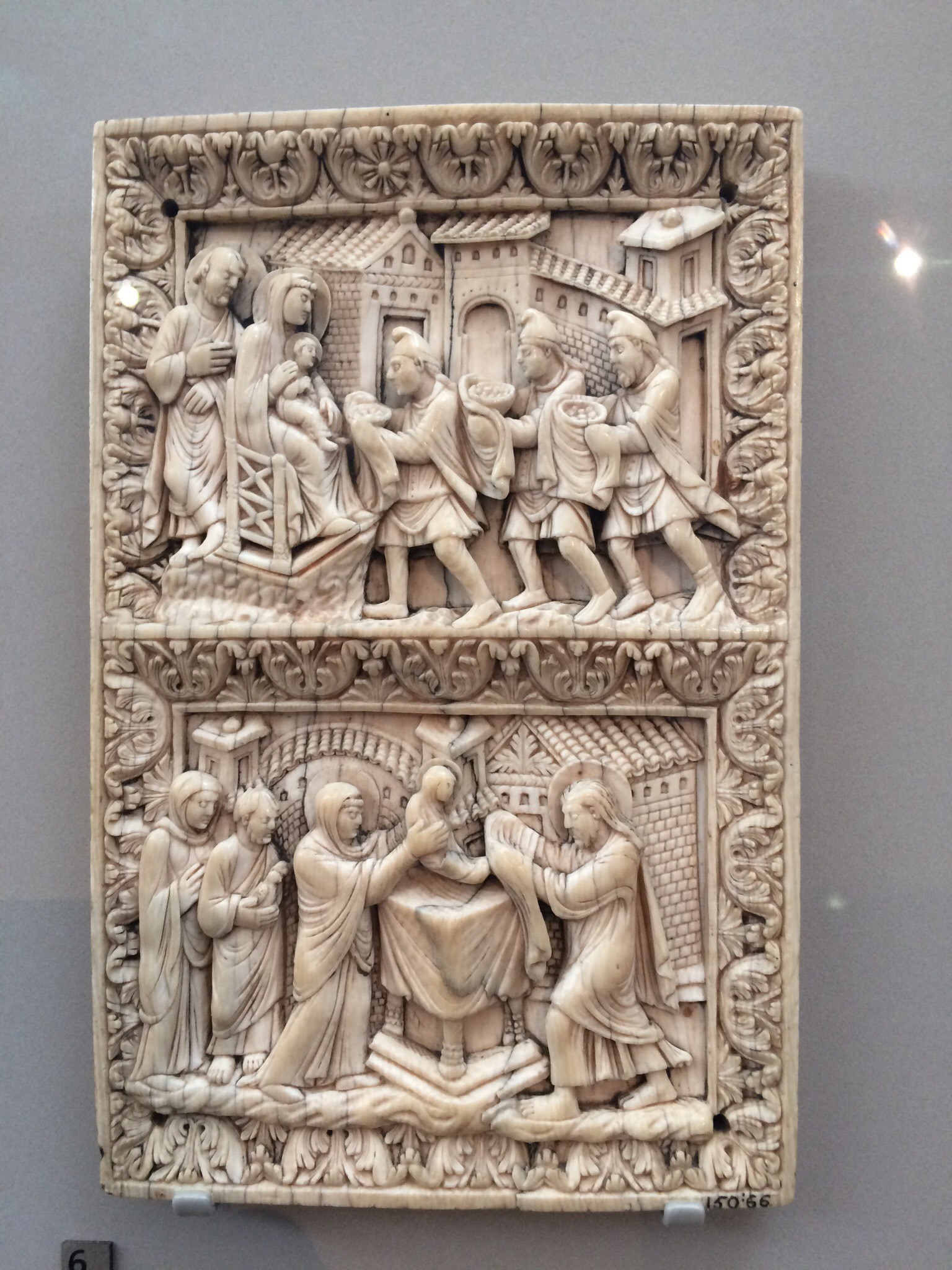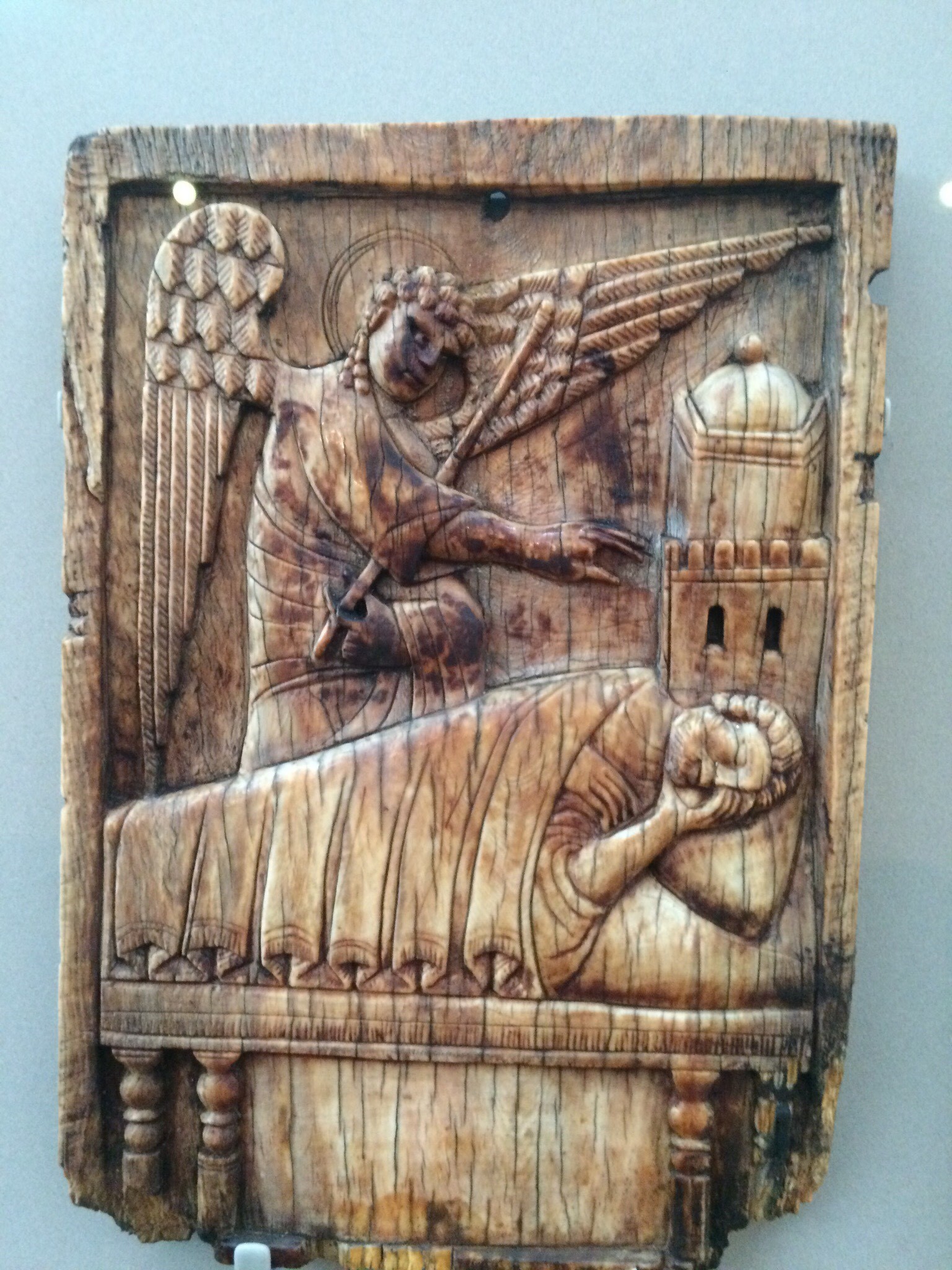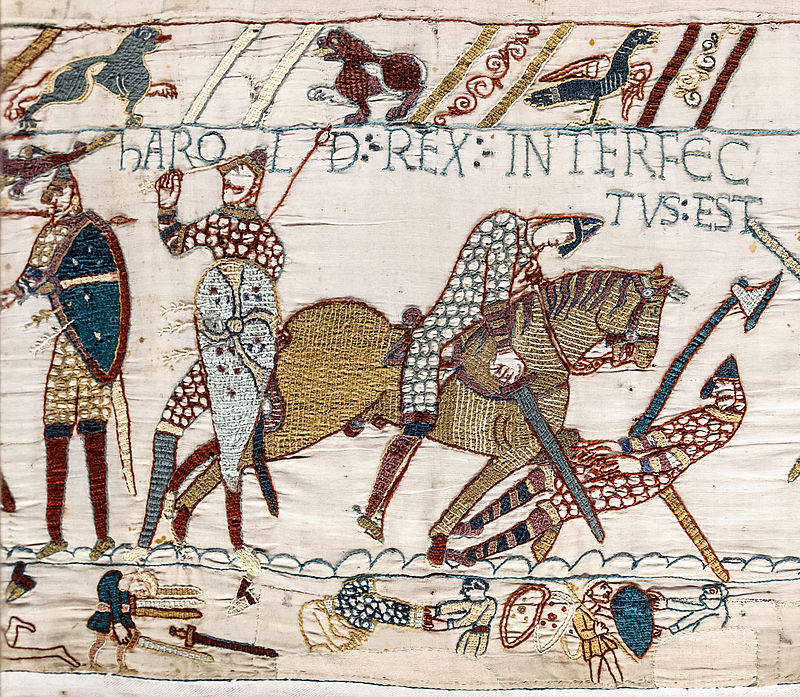
Scene from the Bayeux Tapestry depicting the Battle of Hastings and the death of King Harold. Harold was king for less than a year and died when an arrow was shot through his eye.
The Battle of Hastings was fought on 14 October 1066 between the Norman-French army of William “the Conqueror,” and an English army under the Anglo-Saxon King Harold Godwinson; when William won the battle, it was the beginning of the Norman conquest of England.
The context of the battle was that the childless King Edward the Confessor died in January 1066, which set up a succession struggle between several claimants to his throne.
King Edward ruled England for 24 years. His nickname reflects the traditional image of him as unworldly and pious. “Confessor” reflects his reputation as a saint who did not suffer martyrdom, as opposed to King Edward the Martyr. Edward built Westminster Abbey in order to have a grand church to bury royal family members. Edward and his wife had no children; it was said that they had no children because Edward kept a vow of celibacy to demonstrate his devotion to Christ. He is
For some time the Abbey had claimed that it possessed a set of coronation regalia that Edward had left for use in all future coronations. Following Edward’s canonization, these were regarded as holy relics, and thereafter they were used at all English coronations from the 13th century until the destruction of the regalia by Oliver Cromwell in 1649.
Harold was crowned king shortly after Edward’s death, but faced invasions by William as well as two other contenders for the throne. King Harold was able to defeat the other two contenders and while Harold and his forces were recovering, William landed his invasion forces in the south of England in late September 1066. Harold was forced to march south swiftly, gathering forces as he went. But he and his army lost, a “very Bad Thing” as the famous 1066 And All That describes it.

